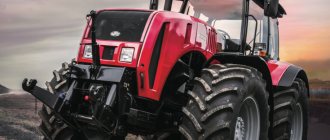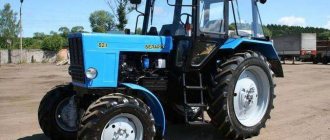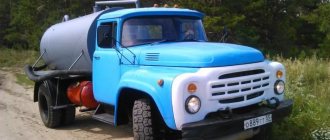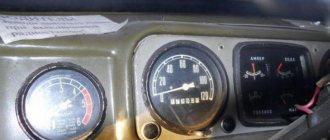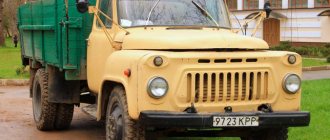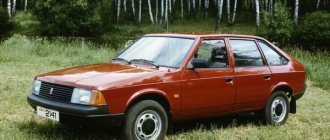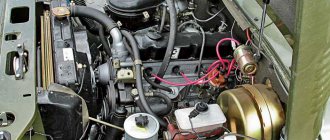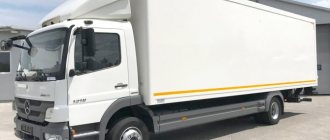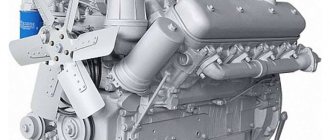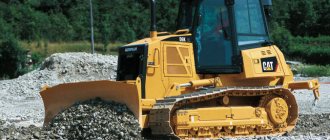General information about technology
“Kirovets” is a Soviet (and then Russian) all-terrain tractor for universal purposes, which belongs to the fifth traction class.
The machine is designed to perform agricultural tasks such as:
- Plowing.
- Cultivation.
- Loosening the soil.
- Sowing.
- Stubble peeling.
The Kirovets tractor was also used for land reclamation and road construction work. K-701 is widespread not only in Russia, but also in the CIS countries. The model appeared 10 years later than the 700th.
Modifications of K-700
Let's look at various modifications of the Kirovets tractor. The K-700A was stronger than its predecessor. It had more power - 235 hp. With. and weighed 11.9 tons. The K 701, which replaced them in 1975, was distinguished by both engine power (300 hp) and weight change (12.4 tons). The springs were removed, the location of the fuel tanks and wheels were changed.
During these same years, the K-703 tractor was developed, featuring reverse control. It made the driver’s task easier when performing work at different speeds. Both when moving the car backwards and forwards, the driver’s position did not change.
Many machines were created on the basis of the K-703: LT-163 (timber stacker), ML-56 (log skidder), LB-30 (grader), PF-1 (front loader), DM-15 (road machine) and many others .
Kirovets K-702 was the basic equipment for loaders, rollers, bulldozers, and scrapers. The tractor is equipped with a hydromechanical gearbox (transmission).
Kirovets K-702MBA 01 BKU is a powerful tractor with bulldozer equipment. It copes well with moving straight soil and a deployed blade. Thanks to all-wheel drive, the car can easily navigate any terrain and roads. The K 702 tractor can easily withstand air temperatures from -40 to +40ºС.
The plant produced a special additional device for the tractor - the K 700 front loader, which met the needs of road work. The front loader was produced under the brand name K 702 MA PK6.
Tractor K-714 is in great demand. It surpasses previous models in build quality. This is a vehicle of the fifth traction class, used in agriculture. In combination with attachments, the Kirovets K-714 performs lifting, bulldozing and snow removal work. The 714 Petra-3ST tractor combines perfectly with imported seeding systems. This expands the scope of technology and makes it more in demand, since it is not tied to one type of work.
Kirovets K-708 belongs to the new generation of manufactured vehicles. Operating speed - 50 km/h, engine power - 280 hp. With. The total capacity of the fuel tank is 320 liters. With a width of 2.5 m, the weight of the tractor was 12 tons. The main advantage of this model is its versatility.
The K-704 Stanislav tractor is produced by the St. Petersburg Machine-Building Plant. The equipment combines the qualities of a bulldozer and an agricultural machine. K 704 is a multifunctional unit.
It is used for tillage, sowing, clearing roads of snow, and for road repair and transport work.
The K-710 Ilyich tractor was released on the 110th anniversary of V.I. Lenin. Despite the enormous capabilities of the machine, it was rather a demonstrative version of the plant named after. Kirov was not included in the series. On its basis, a new tractor was created - K-701M, incorporating all the best from its predecessor.
The K-740 tractor and the models following it were completely restyled. The launched program involved modernizing the K 740 in such a way that it could replace foreign analogues.
Appearance
The K-701 tractor has a simple and ascetic design. Aesthetics is perhaps the last thing that Soviet engineers cared about. After all, the country needed powerful and productive tractors.
"Kirovets" is one of the few domestic tractors that has a rotating frame. This provided the vehicle with high maneuverability. At the front there was a simple metal bumper with round headlights and turn signals. At the rear there are primitive lights and a towbar. The latter was unified with other models of the 700 series. A distinctive feature of the Kirovets is its wheels. They have equal dimensions, which are unusual for tractors, and are capable of operating at low pressure. This provides the vehicle with excellent cross-country ability. Above the front left wing there is a “pan” with an air intake. It is taken to the highest possible level. The exhaust is also located nearby. There are also side lights and additional headlights on the roof.
"Kirovets" inside
“Kirovets” is one of the few tractors whose cabin is designed for two people. It is quite spacious, but has a number of disadvantages. So, there is no normal ventilation and heating system here. The controls are placed very inconveniently.
Among the advantages, it is necessary to note good all-round visibility (partly thanks to the “captain’s” landing). In terms of comfort, the Kirovets is significantly inferior to Chinese and American tractors.
Specifications
The K-701 wheeled tractor is an improved version of the K-700 model. And the main changes were precisely in the technical “stuffing”. So, it was planned to install a 300-horsepower turbocharged engine from YaMZ on this equipment. But at that time, the Yaroslavl Motor Plant could not cope with such a volume of orders. Therefore, the first copies of the K-701 tractors were equipped with the old engine model 238NB. This is an 8-cylinder power unit with a capacity of 200 horsepower. Also in the lineup was the YaMZ-238ND3 engine. This diesel engine was 35 horsepower more powerful than the previous one. A little later, the K-701 tractor began to be equipped with the engine that was planned - YaMZ-240. This is a 12-cylinder V-shaped unit with a cast iron block with a capacity of 300 horsepower.
This motor was developed specifically for heavy equipment and had an undoubted advantage - high traction. The torque of the Yaroslavl diesel engine is 1240 Nm at 1.9 thousand rpm. The motor itself was installed in the front rotating frame. All vibrations from it were damped by rubber shock absorbers. This engine was also installed on Belaz dump trucks with a lifting capacity of 32 tons.
Characteristics and engine of the K-700
The description of the technical characteristics of the K-700 given below indicates the fairly high productivity of agricultural machinery, which occupied the 1st stage of the Kirovets tractor model range:
- Fuel tank capacity - 450 l.
- Ground clearance - 440 mm.
- The track width is 1910 mm.
- Acceleration forward/backward - 33.8/24.3 km/h.
- The specific fuel consumption rate is 266 g/kW/hour.
- Rated motor power is 230 kW (169 hp).
The engine of the K-700 tractor model represents its main unit. The power plant is produced by the Yaroslavl Motor Plant. The YaMZ-238NM series unit is an eight-cylinder diesel engine with a power of 230 kW. The motor is mounted on the front semi-frame of the technical device on rubber shock absorbers.
The air purification system in the engine is a two-stage one. It is characterized by the following properties:
- dry;
- combined;
- 2-stage cleaning.
The operation of the system is as follows:
- Diesel air intake.
- Enters the air cleaner through the suction pipe.
- Air purification in cylinders under high pressure.
The engine is equipped with a two-level air purification circuit. The fuel supply system includes the following components:
- nozzle system;
- cleaning filter - 2;
- fuel line - 1;
- pumping stations - 3.
Protection of the motor from overheating is ensured by installing a liquid cooling system with constant circulation. Among the pumping stations there are different:
- standard;
- manual;
- high pressure.
For use in difficult weather conditions, the engine is equipped with a “cold” start system. This makes it possible to start the vehicle, including the engine, even in very low temperatures. Dimensions of K-700 are:
- length - 7400 mm;
- width - 2880 mm;
- in height - 3950 mm.
The mass of the technical equipment is about 11.9 tons.
A closed-type engine cooling system with a compensating circuit of forced water circulation protects it from overheating. The K-700 tractor, the technical characteristics of which require the presence of a steam-air valve, has a fuel system that ensures a temperature increase during boiling of the cooling water. It serves to protect the radiator pipe from destruction due to pressure changes.
Engine design features
A distinctive feature of this engine is the V12 cylinder layout. Some people think that the YaMZ-240 was created from two twin six-cylinder YaMZ-236. However, the 240 has nothing to do with it. This unit is based on the 8-cylinder YaMZ-238. Engineers not only added 4 cylinders to it, but also changed their camber angle. New crankshaft journal bearings were also used. The cylinders were arranged in 2 rows at an angle of 75 degrees. The rows were offset by 3.5 centimeters relative to each other. Thanks to this method of cylinder arrangement, engineers managed to reduce the engine weight to 1,790 kilograms in running order. The engine also used 39 liters of oil and 35 liters of coolant.
The K-701 tractor engine was equipped with two K-36 model turbochargers. They used the energy of the exhaust gases for additional boost. What is noteworthy is that these compressors were manufactured in Czechoslovakia. New Kirovtsev models (K-744 and others) are equipped with Russian turbines from NPO Turbotekhnika.
To successfully start the tractor in winter, a comprehensive fuel and engine heating system is provided. This made it possible to use the technology in the most remote latitudes of the country.
Tractor Kirovets K-700: history
The decision to begin production of the K-700 tractor came in 1961, when the need to re-equip the Soviet agricultural automobile industry became critical. In 1962, the first Kirovets tractor rolled off the assembly line of the Kirov plant in Leningrad. This was the first energy-rich wheeled tractor of Soviet production.
The car received traction class 5 and large tires. Mass production of tractors was launched in 1969. In 1975, the classic K-700 model was replaced by the K-700A and K-701. There were few fundamental differences between the cars, to be more precise, only one - the engine. The K-700A was equipped with an 8-cylinder YaMZ-238NDZ. The engine power was 235 hp. This engine formed the basis for the production of a wide range of vehicles, including the modern MAZ.
The K-701 tractor was equipped with 12-cylinder YaMZ-240BM2. This engine had a power of 300 hp. The rest of the cars were unified. Unlike their predecessor, the K-700A and K-701 did not have springs; instead of one fuel tank, they received one on the left and right, as well as new wheels.
On the basis of the K-700 tractor, special-purpose machines for timber harvesting, graders and bulldozers, front-end loaders, road and agricultural equipment were developed. Kirovets became the progenitor of a whole generation of machines, universal in their industries. The tractor was used as a base for a military tractor.
Since 1990, the Kirov Plant began producing equipment for various purposes based on the K-700A and K-701 tractors. The list of machines included road rollers, snow removal machines, welding units, and vibratory rollers. In 2002, production of the K-700A and K-701 tractors ceased. The St. Petersburg Tractor Plant, which had already been reorganized at that time, began production of the K-744 model, which continues to this day.
According to the plant management, the K-700 tractors were obsolete and required replacement. Indeed, the equipment was equipped with cabins of the previous generation and no longer met safety requirements. Agronomists criticized the specific pressure of the tractor on the ground. The Kirovets K-700 was not only not comfortable, but could also roll over on serious uneven roads due to the engine being too far forward.
However, its advantages in the form of reliability, maintainability, durability, increased productivity and ease of maintenance are undeniable. In addition, the tractor easily coped with its tasks in various climatic conditions. The new model K-744 became expensive, but the key shortcomings in it were not corrected.
Responding to consumer demand for cheap but productive K-700 machines, various Russian factories continue to produce equipment. Also available are tractors, bulldozers, road and special equipment. The St. Petersburg Tractor Plant continues to produce special-purpose equipment based on the K-700.
Transmission
The gearbox was unified with the 700 model tractor. A distinctive feature of this gearbox is the absence of a clutch. This function was performed by the oil drain pedal in the hydraulic system. The transmission itself had 16 speeds with spur gears. The box contains 4 hydraulic gears, two neutral and 4 mechanical. The first and last had a divider (high or low gear mode). The box also included 8 reverse speeds. Due to the clutches, gear shifting was carried out without loss of power. The speeds were activated by redirecting the oil flow. Why are there two neutral gears in this transmission? The first neutral slowed down the shaft with clutches and worked like a handbrake, so it was turned on only after the tractor had completely stopped. The second neutral cut off the hydraulic oil flow, allowing the engine to switch to one of four mechanical speeds.
Design of technical equipment
All models of Kirovets K-700 tractors, the technical characteristics of which have significant advantages, have a reliable engine. Vehicles produced before 1962 are distinguished by the presence of an all-metal base, they have a reliable power plant and a wheeled or tracked undercarriage. The K-700 modification (a tractor with a combined frame) operates on a 16-speed gearbox. A gearbox with hydraulic gear shifting is available with a friction system.
The frame includes 2 movable half-frames, which are fastened together using a hinge joint.
The movement of the semi-frames relative to each other occurs in a horizontal and vertical plane. This not only creates good adhesion of the machine wheels to the road, but also the greatest cross-country ability. The maneuverable model, equipped with a cardan shaft for power transmission, has 2 drive axles. A design feature is associated with the absence of a clutch, which is replaced by drain pedals. Unlike many Soviet-era tractor models, the K-700 is equipped with a comfortable two-seat cabin.
Manufacturers paid attention to the organization of the workplace, so the cabin is sealed. It provides a heating system, and the position of the driver's seat can be changed at the request of the tractor driver. The cab is secured to the frame using a shock-absorbing system.
Attachments can be attached using a three-point hydraulic attachment system. This unit has a load capacity of 2 tons, and trailed equipment has a similar capacity of 5 tons.
The tractor can be attached to different types of equipment and machinery for agriculture.
Installing mounted and trailed equipment is quite simple, so the tractor driver himself can handle this task.
Modifications
Over the years of production, several modifications were created based on the 701st Kirovets. Among them, the 701M version was distinguished by a more high-torque YaMZ 8423 engine. With a cylinder volume of 17.24 liters, it produced 335 horsepower, which is 10.5 percent more than the YaMZ-240.
There was also a modification used as a base machine for rollers, loaders and scrapers. This is a K-702 with a modified linkage system and hydromechanical transmission.
K-703 is an industrial modification of the Kirovets. This tractor is distinguished by a reversible control post. The 703MT version was an articulated dump truck with a maximum payload of 18,000 kilograms.
Modifications of K-700
- wheeled tractor K-700A - has a 230-horsepower engine;
- K-700B – generates 250 hp. power;
- K-701, -702 and -702 - for industrial use;
- K-703 - it is still being produced at the St. Petersburg Tractor Plant.
The K-700 tractor is easy to care for and maintain, the progress of which is detailed in the video.
Only people who are familiar with the safety rules and have the appropriate document - a tractor license - are allowed to work with it.
The main pros and cons of Kirovets
Over the years of operation, the K-701 tractor has shown full suitability for work in the most difficult conditions. Among the main advantages, reviews note:
- reliability of the Yaroslavl engine;
- high performance characteristics;
- availability of free access to the main components and assemblies, which facilitates maintenance;
- Availability of a wide range of attachments.
Among the disadvantages, owners highlight:
- Very stiff suspension.
- A highly shifted center of gravity (concentrated in the front), which is why the equipment can slip in heavy mud when there is a heavy trailer.
- Lack of a comfortable cabin.
Operator's cabin and electrical equipment
The K-700 was designed with a 2-seat closed all-metal cabin, attached to the engine on a frame pedestal. It is equipped with a stove, fan and thermal insulation for comfort at any time of the year.
The tractor driver's seat is sprung and equipped with hydraulic shock absorbers. Its rigidity can be adjusted to the individual requirements of the operator.
Electrification of the K-700 tractor includes:
- ammeter;
- t 0C and lubricant pressure sensor;
- 5 headlights, of which 3 are front;
- battery;
- current rectifier.
